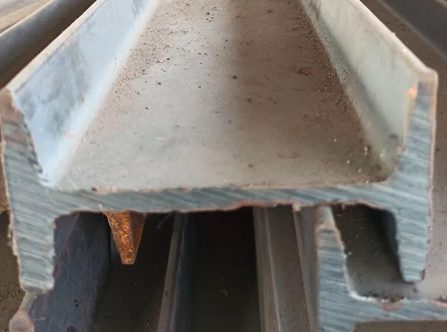In the realm of construction and structural engineering, few components hold as much significance and fascination as the I-beam. It's a ubiquitous feature in buildings, bridges, and various infrastructural marvels, renowned for its unparalleled strength and durability. But what exactly makes an I-beam so robust? Let's delve into the intricacies of its design and engineering to uncover the secrets behind its remarkable strength.

The Anatomy of an I-Beam
At first glance, an I-beam appears simple—a horizontal piece flanked by two vertical components forming the shape of the letter "I." However, its strength lies in this deceptively straightforward design. The horizontal component, known as the flange, resists bending, while the vertical sections, or webs, provide stability and support against shear forces.
Distributed Load Distribution
One of the key factors contributing to the strength of an I-beam is its ability to distribute weight efficiently. When subjected to a load, whether from the weight of a building or the traffic on a bridge, the load is spread across the entire structure. This distribution minimizes stress concentrations, preventing localized failures and ensuring the beam can support substantial weight over long spans.
Efficient Use of Materials
Another aspect that enhances the strength of an I-beam is its efficient use of materials. By concentrating the bulk of the material in the flanges, where it's most effective in resisting bending forces, and employing thinner webs to provide necessary support, engineers can optimize the beam's strength-to-weight ratio. This results in a structure that is both strong and lightweight, essential for various construction projects where minimizing weight is critical.
Welding and Manufacturing Techniques
Advancements in welding and manufacturing techniques have further bolstered the strength of I-beams. Modern fabrication methods allow for precise assembly, ensuring uniformity and consistency in the finished product. Welded connections between the flanges and webs eliminate potential weak points, enhancing the overall integrity of the beam and its ability to withstand heavy loads and dynamic forces.
Versatility and Adaptability
One of the reasons I-beams are favored in construction is their versatility and adaptability to different structural configurations. Whether used in skyscrapers, bridges, or industrial facilities, I-beams can be customized to meet specific design requirements, offering engineers the flexibility to create innovative solutions without compromising on strength or stability.
In conclusion, the strength of an I-beam stems from its ingenious design, efficient load distribution, and advancements in manufacturing techniques. By harnessing the inherent properties of materials and optimizing structural elements, engineers have unlocked the potential for constructing safer, more resilient buildings and infrastructure. As we continue to push the boundaries of construction and engineering, the I-beam stands as a testament to human ingenuity and the pursuit of excellence in structural design.








